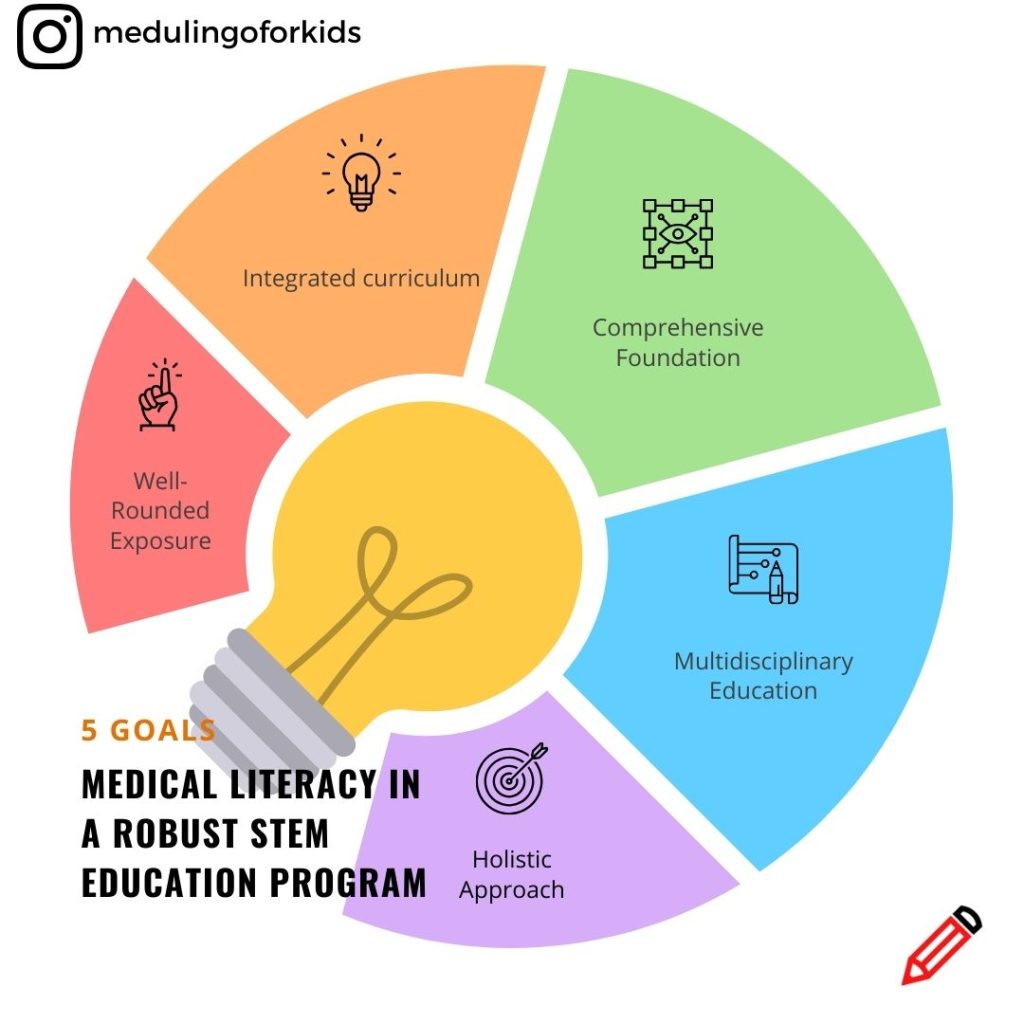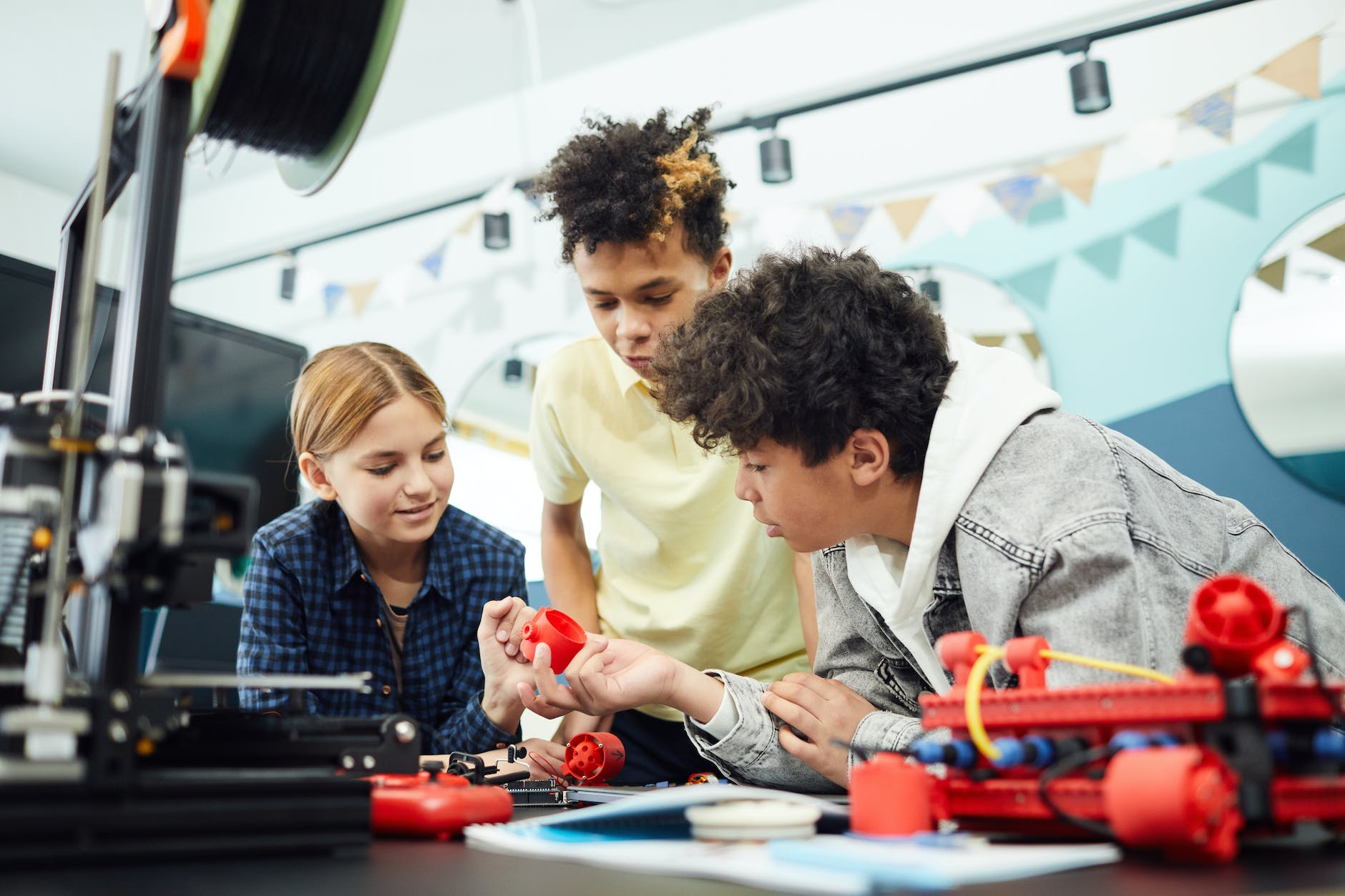In the dynamic realm of STEM education, the pursuit of an integrated, comprehensive, holistic, well-rounded, and multidisciplinary curriculum stands as a cornerstone for shaping adept future professionals. Such a robust STEM education program not only equips students with technical skills but also fosters adaptability, critical thinking, and a broad understanding of interconnected fields. Integrating medical literacy into STEM programs amplifies these qualities, offering a transformative educational experience.

Building an Integrated, Comprehensive Foundation
An integrated STEM curriculum seamlessly intertwines various disciplines such as science, technology, engineering, and mathematics. It enables students to perceive connections between these domains, fostering a cohesive understanding of complex concepts. Including medical literacy enriches this integration by bridging the life sciences with technology, mathematics, and engineering. Students grasp the relationship between medical advancements and the scientific principles underpinning them, creating a cohesive framework of knowledge.
A Holistic Approach to Learning
A holistic STEM program transcends conventional subject boundaries. It prioritizes a comprehensive understanding of how diverse disciplines interplay and impact real-world scenarios. Integrating medical literacy introduces students to the intricate relationships between health, the sciences, technology, and society. It encourages holistic thinking, emphasizing the interconnectedness of scientific knowledge with human health, ethics, and societal implications.
Crafting a Well-Rounded Educational Experience
A well-rounded STEM education extends beyond technical competence, nurturing well-rounded individuals equipped with critical thinking, creativity, and ethical awareness. Medical literacy augments this aspect by infusing health considerations, societal impacts, and communication skills into STEM learning. Students learn to critically assess healthcare issues, weigh ethical dilemmas, and communicate as well as evaluate complex medical information effectively, shaping empathetic and well-rounded professionals.
Embracing Multidisciplinarity
Multidisciplinary education encourages students to explore diverse perspectives, enhancing problem-solving abilities and fostering innovation. The integration of medical literacy in STEM breaks silos, encouraging collaborations between life sciences, engineering, data science, and healthcare. Students may engage in interdisciplinary projects, such as designing medical technologies, analyzing health data, or exploring bioinformatics, promoting a multidisciplinary approach to problem-solving.
The Impact of Medical Literacy
Introducing medical literacy into STEM education broadens horizons in numerous ways. It cultivates a deeper appreciation for the ethical implications of scientific advancements, nurtures empathy towards societal healthcare needs, and bolsters critical thinking by analyzing and evaluating complex medical information. Students equipped with medical literacy develop a more profound sense of social responsibility and a broader perspective on the role of STEM in improving human lives.
Include Medical Literacy in a Robust STEM Education Program
Incorporating medical literacy enhances the integration, comprehensiveness, holism, well-roundedness, and multidisciplinarity of a STEM education program. It empowers students to navigate complex intersections between science, technology, and healthcare, fostering critical thinking, ethical awareness, and multidimensional problem-solving skills. Educators embracing this integration lay the foundation for a generation of STEM professionals equipped to tackle the multifaceted challenges of the future.
===
Interested in teaching medical literacy pain free? Shop medical literacy resources!

This article was drafted by ChatGPT and edited by Joan Lee Tu, the founder of MedULingo.com.
You may also be interested in the following articles:
Why Medical Literacy Needs To Be In Your School STEM Program
Why a Robust STEM Education Program Needs to Include Medical Literacy
20 Benefits of Including Medical Literacy in Your STEM Program
How Medical Literacy Activity Books Empower Learners in STEM Education
How to Empower Future STEM Innovators with Self-Directed Learning in Medical Literacy
Why STEM Education Needs Medical Literacy to Foster Healthcare Innovators
Why You Need Diverse Learning Modalities for Medical Literacy
Building Foundational Medical Literacy Skills in STEM Education
Four Cs of Medical Literacy: Comprehension, Conversation, Communication, Collaboration

